What are OTUkV/Functionally-Compliant OTUk Frames?
There are two broad categories of OTUk Frames.
- There are the Fully-Compliant OTUk Frames (which we will refer to as OTUk frames).
- And there are the Functionally-Compliant OTUk Frames (which we will refer to as OTUkV frames).
To help show how the OTUkV frames differ from the OTUk frames, I will first discuss the Fully-Compliant OTUk frames.
Please note that you can find a much more in-depth discussion of the Fully-Compliant OTUk Frame here in the OTUk Post.
The Fully-Compliant OTUk Frame
There is only one type of Fully-Compliant OTUk frame.
The Fully-Compliant OTUk frame is a frame that entirely complies with all the ITU-T G.709 recommendations for an OTUk frame.
It has the exact field formats and field sizes/types that are specified within ITU-T G.709. Figure 1 presents an illustration of the Fully-Compliant OTUk frame.
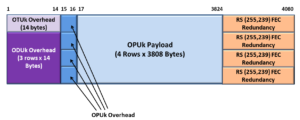
Figure 1, Illustration of the Fully-Compliant OTUk Frame
The OTUk Post already discusses and defines each of these OTUk Overhead fields. Thus, we will not repeat that information in this post.
ITU-T G.709 states that the Fully-Compliant OTUk Frame should have all the following features/attributes.
- The overall frame size should be a 4 Row by 4080 Byte Column Structure.
- It contains an OTUk Overhead of 14 bytes that matches the Overhead fields described in the OTUk Post.
- The frame contains the three rows by 14-byte column ODUk Overhead field that matches the Overhead fields described in the ODUk Post.
- The OTUk frame contains a 4 row by 3808-byte OPUk field, along with a 4 row by 2-byte column OPUk overhead that matches the Overhead fields described in the OPUk Post.
- It includes a 4 row by 256-byte column structure for FEC (Forward Error Correction) that we can compute using the Reed Solomon, RS(255,239) scheme.
Some industry people simply refer to this type of FEC as “GFEC” (because it complies with the ITU-T G.709 requirements for FEC).
NOTE: We will refer to the Reed-Solomon FEC (as called out in ITU-T G.709) as “GFEC” throughout the rest of this post.
If the OTUk frame differs from these characteristics by even one item, then we cannot refer to this type of frame as being a Fully-Compliant OTUk frame.
We must refer to this type of frame as a Functionally Compliant OTUkV frame.
The Functionally-Compliant OTUk (OTUkV) Frame
In contrast to the Fully-Compliant OTUk frame, ITU-T G.709 identified six (6) variations of OTUkV frames.
These six variations are:
- OTUkV frame with Alternative 7% FEC (also referred to as the OTUk-v frame)
- OTUkV frame with Larger/Stronger FEC
- OTUkV frame with Smaller FEC
- OTUkV frame without FEC
- OTUkV frame with Different Frame Structure and FEC Area
- OTUkV frame with Different Frame Structure and No FEC Area
We will describe each of these variations of OTUkV frames below.
NOTE: The reader should not consider this list of types of OTUkV frames to be an exhaustive list.
Other variations within these frames are possible (and still qualify at OTUkV frames).
OTUkV Frame with Alternative 7% FEC
This type of OTUkV frame is ALMOST the same as the Fully-Compliant OTUk frame. It has the same set of fields (payload and overhead bytes). It also has the same frame size (e.g., 4080-byte columns by four rows).
The only difference between this particular Functionally-Compliant OTUkV frame and the Fully-Compliant OTUk frame is how we calculate the FEC.
Figure 2 illustrates the field format for this particular OTUkV frame.
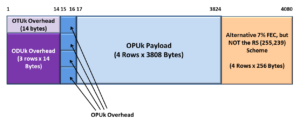
Figure 2, Illustration of the OTUkV Frame with Alternative 7% FEC
Other “7% FECs” exists other than the Reed-Solomon FEC (or GFEC).
If an OTUk frame uses one of these alternative types of FECs, rather than the “GFEC,” then we need to refer to this frame as an OTUkV Functionally Compliant frame.
NOTE: Some OTN-related documentation refers to these functionally-compliant OTUk frames as OTUk-v frames.
OTUkV frame with Larger/Stronger FEC
Some applications need the use of a Stronger FEC.
These are applications in which the system design requires a much larger NCG (Net Coding Gain).
Long-Haul applications (where there are long fiber spans between 3R regenerators) are examples of such applications.
These applications will need a more robust FEC, which (in turn) will need a larger FEC area within the OTUkV frame.
Figure 3 presents an illustration of this type of OTUkV frame.
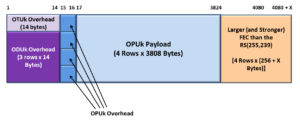
Figure 3, Illustration of the OTUkV Frame with Larger/Stronger FEC
Since we are using a larger FEC (and larger FEC area), this type of OTUkV frame will be larger than that for the Fully-Compliant OTUk frame.
This type of OTUkV frame will have 4080 + X byte columns and 4-byte rows.
NOTE: In most cases, for a given value of k (in OTUk/kV), the Frame Repetition rate will be the same for all OTUk/kV-type frames.
For example, if you look at the OTUk post, you will see that the Frame Repetition Rate for an OTU2 signal is 82,028 frames/second.
We can state that this also means that the Frame Repetition rate for an OTU2V frame (a different size than that for the OTU2 frame) will also have this same frame repetition rate.
This means that the OTUkV frame, which is larger than its OTUk counterparts, will need to operate at a higher bit rate to transmit these frames than that to transmit the OTUk frames.
Similarly, OTUkV frames that are smaller in size than their OTUk counterparts will need to operate at a lower bit rate to transmit these frames than that to transmit the OTUk frames.
OTUkV frame with Smaller FEC
There will be applications where we will not need an FEC as large as the 7% GFEC. In these applications, we can get away with using smaller FECs. Figure 4 illustrates an OTUkV frame with this kind of FEC.
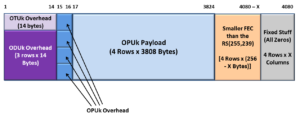
Figure 4, Illustration of the OTUkV Frame with Smaller FEC
You can see that Figure 4 shows that this type of OTUkV frame is of the same frame size as that for the Fully-Compliant OTUk frame.
In this case, the actual FEC takes up less “real estate” than that for the GFEC. However, the unused portions of the FEC field are filled with an All-Zeros pattern to “pad out” the remaining FEC byte fields.
OTUkV frame without FEC
There will be applications that will require OTUkV frames without FEC. Some of these applications will typically be very low-latency applications (e.g., for Enterprise Applications such as Real-Time Stock Quotes, etc.).
FEC coding and decoding all require some number crunching that does consume a finite amount of time and increases latency.
Figure 5 presents an illustration of this type of OTUkV frame.
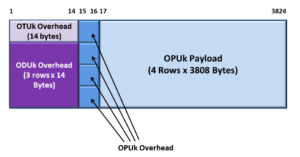
Figure 5, Illustration of the OTUkV frame without FEC
NOTE: Some applications will implement the “No-FEC” OTUkV frame by filling the entire FEC field (as drawn in Figure 1) with an all-zero pattern.
In this case, the “No-FEC OTUkV frame” would be the same size as the Fully-Compliant OTUk frame.
Figure 6 presents an illustration of this example OTUkV frame.

Figure 6, Illustration of the No-FEC OTUkV frame with the entire FEC field set to an All-Zeros pattern
OTUkV frame with Different Frame Structure and FEC Area
OTUkV frames of completely different Frame Structure (from the Fully-Compliant OTUk frame) can be (and are) sent out onto the OTN network.
Before the days of OTUCn, some people used these types of frames to (for example) support “200Gbps or More” Operations.
In this case, an entire OTU4/4V frame (within a given OTU4 signal) could be mapped into one of these structures. Afterward, we could bit-interleave this structure with other structures (from another OTU4 signal) to achieve “200Gbps” transmission.
I will elaborate on the actual mechanics behind this scheme in another post.
Figure 7 illustrates the With-FEC version of this “Different Structure” OTUkV frame.

Figure 7, Illustration of the OTUkV Frame with Different Frame Structure and FEC Area
OTUkV frame with Different Frame Structure and No FEC Area
This type of frame would have a similar use to that in the previous section.
The only difference between this frame and that of the previous frame is that this particular frame does not contain an FEC.
Again, a possible application (for this type of frame) would be to support 200Gbps (or higher rate) applications.
In this case, we would map an OTU4/4V frame into this structure.
Afterward, we would combine this signal with another by bit-wise multiplexing this data with another such signal (from another OTU4/4V signal) when transmitting this data to the line.
In this case, we might not need the FEC because the OTU4/4V frames (carried within this structure) might already have their own FEC.
Figure 8 presents an illustration of this type of OTUkV frame.
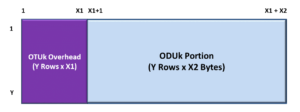
Figure 8, Illustration of the OTUkV Frame with Different Frame Structure and No FEC Area
Has Inflation got You Down? Our Price Discounts Can Help You Fight Inflation and Help You Become an Expert on OTN!! Click on the Banner Below to Learn More!!!
Discounts Available for a Short Time!!
For More Information on OTN Posts in this Blog, click on the Image below.



